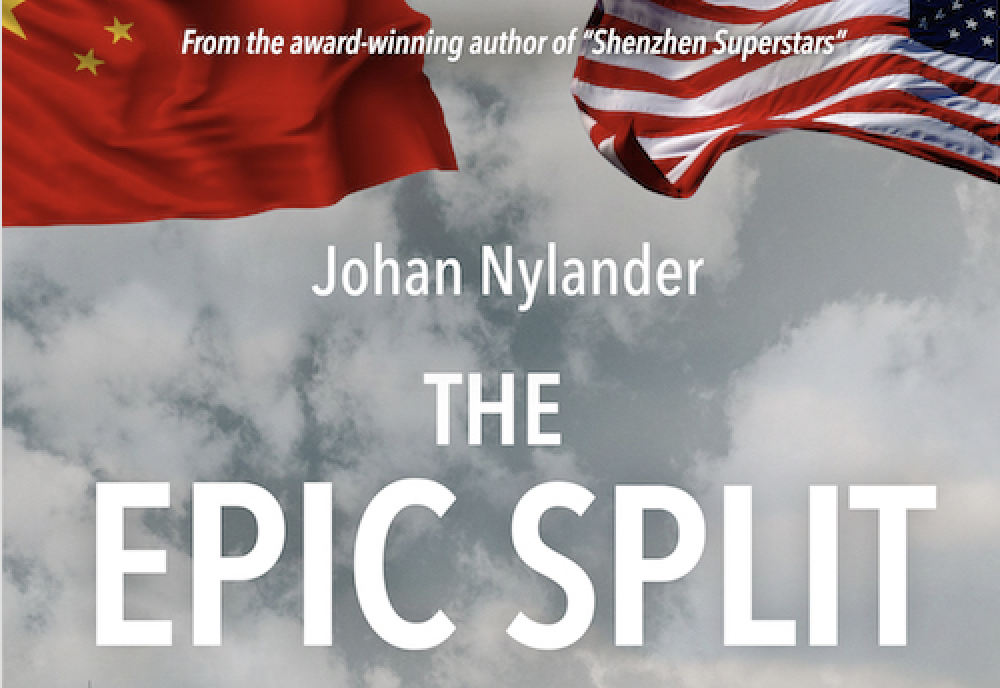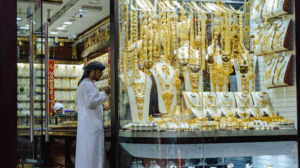New book explains why decoupling is happening, and how companies can find opportunities in the trade war
Some people still deny that decoupling from China is happening. They say it can’t be done. In a speech earlier in the year, Chen Deming, former Commerce Minister of China, said decoupling was unthinkable.
“To hell with decoupling!” Chen said.
But the numbers are clear. A diversification away from China is most definitely underway. China’s era as the world’s factory is coming to an end.
In a new book on the topic, The Epic Split – Why ‘Made in China’ is going out of style, I explain the background to this fierce and escalating trade conflict between the world’s two biggest economies but also how international and Chinese companies navigate these new waters of trade war, decoupling and consumer boycotts.
As a journalist based in Hong Kong for the last decade, I have enjoyed a ring-side view of the astonishing transformation in trade and diplomatic relations between China and the West. As the global conflict deepens, I often feel more like a trade war correspondent than an Asia correspondent.
This is not a book about the world going up in flames. It’s about change and opportunities. For China, the conflict has given new urgency to the need to modernize its economy and become more self-reliant in technology. For international companies and for governments around the world, it has been a wake-up call to cut dependency on Chinese supply chains, against a backdrop of rising consumer scepticism toward China.
But let’s reverse the tape. A trend of companies leaving China had been underway for years, long before the trade war and the covid-19 crisis.
Some years ago, I visited a Chinese businessman in Dongguan, a factory town known as “China’s Sin City” in the southern province of Guangdong, bordering Hong Kong.
Dongguan had become known as one of the workshops of the world. Not long ago, it produced more than a third of the world’s toys, along with mountains of shoes, furniture and other mass-market products. More than two thirds of the city’s residents were guest workers from other provinces. Like many Chinese factory cities, it aimed to move up the value chain via robotics and automatization.
Instead, however, a ruthless wave of bankruptcies and factory shutdowns had swept through the city. With the number of minimum-wage earners having soared over the years, competition from other low-income countries such as Vietnam, Mexico and Bangladesh now presented a major challenge to their economic prospects. Also playing into the scenario were the central government’s beefed-up environmental and sustainability requirements.
“This is a downward spiral”, the businessman told me. “The factories close, guest workers move, restaurants and shops close. I am concerned for the future of my family.”
We drove around the city’s factory areas for several hours. Everywhere we looked were empty or half-empty factories. Massive red banners, hung on the fronts of buildings, displayed phone numbers to call to rent or lease space.
According to the businessman, rents had dropped by half in only two years. In some parts of town, more than a third of all factories had shut their doors, he said. Factory owners were offering a finder’s fee of a month’s rent for information leading to new tenants.
“This is a catastrophe”, he said. “The government should stop factories from moving to cheaper countries.”
Manufacturing of low-quality goods was the first to move out – and some analysts claim that most talk of decoupling, diversification and reshoring mainly refers to such industries. But that’s wrong. It’s happening in high-end manufacturing too.
Perhaps the most powerful case is that of Samsung Electronics, the world’s biggest maker of mobile phones and other everyday cutting-edge technology products. At the end of 2019, the South Korean giant closed its last mobile-phone factory in China – in Huizhou, another city in the Pearl River Delta. The move was portrayed in international business media as a massive symbolic blow to Chinese manufacturing.
“Samsung has achieved something that Tim Cook, chief of its arch-rival Apple, has suggested would be all but impossible: it has moved its smartphone manufacturing out of China”, the Financial Times commented.
It didn’t take long for the second domino to fall. In August 2020, the Korean tech giant confirmed that it is also closing down its last PC factory in China, in a move to cut costs and improve the efficiency of its supply chain amid rising geopolitical tensions. The move was seen by commentators as further evidence that China is quickly losing its advantage in assembly and manufacturing.
More local communities are taking a hit from the kind of manufacturing flight witnessed in Dongguan. According to media reports, Huizhou has turned into a ghost town since Samsung closed its three-decades old factory. At least 60 percent of local businesses have also closed up shop, according to the Institute of Contemporary Observation, which studies working conditions in hundreds of factories across China. The institute expects “at least 100 factories” and countless other small shops and restaurants to close down too.
Now, numerous more American, European, Japanese and companies from other countries are followed in Samsung’s footstep. Alphabet’s Google, Nintendo, Sharp, Quanta Computer, Dell and HP have all moved some of their production out of China over the last years.
Even Apple has started to experiment with production moves out of China, and many of its suppliers have stated that they are ready to make the shift. Several experts and executives within Apple have for years warned about the company’s dependency on China and urged top leaders to rebalance its whole manufacturing apparatus.
Apple’s top manufacturer, Taiwan’s Foxconn Technology Group – which hires about 1 million unskilled and skilled employees in China – has said it has capacity to move Apple’s production lines out of China if necessary.
The company’s chairman, Liu, has even said that because of the trade war, China’s “days as the world’s factory are done”.
In terms of share of global manufacturing, the movement away from China is evident. A yearly study by the international manufacturing consulting firm Kearney shows that China, year by year, is losing its position as the world’s biggest maker of goods. It’s a fascinating read. The so-called Kearney China Diversification Index (CDI) tracks the shift in US manufacturing imports away from China and to other Asian countries. It concludes that while China remains the world’s primary producer of manufactured goods, it has now lost share within the CDI for the sixth year in a row.
In short: China still leads the pack but it is losing share, and fast.
A report by Bank of America from February 2020 concluded that a range of reasons have led to an “exodus” from China’s supply chains. Companies in two-thirds of global sectors in North America have either implemented or announced plans to pull at least a portion of their supply chains out of China. “Unsurprisingly, our survey validates the conjecture that a lot of companies are moving production facilities out of China”, the bank said.
The book presents several reports and studies that all confirm the trend, but also which strategies international companies are taking to navigate and find opportunities in these new times of trade war, decoupling and consumer boycotts.
Like it or not: If the past 40 years were characterized by globalization, the next 40 may well be all about decoupling.
The battle has only just begun.
Picture credits: Johan Nylander







Decoupling from China makes no sense. And yet it’s happening, because economic policies these days don’t follow sense. They follow visionary concepts like The China Dream, MAGA, national pride and often sheer spite. Business is more agile than politics, so commerce flows around political obstacles—often with unwanted consequences. Thank you for the great illustration!
Thanks for your comment. Yes, decoupling is happening. The data is clear, and I would say it makes perfect sense. It’s not particularly cheap to produce in China any more (compared to, say, a decade ago), and China has become a strategic rival in many sectors. Human rights violations are too horrific to ignore. There’s also a clear trend that consumers across the world prefer to buy products not made in China, and willing to pay a premium for that. But yes, I also agree with you that parts of the conflict is based on national pride and sheer spite, with the ultimate risk of a cold war turning hot. There are indeed unwanted consequences on the horizon.